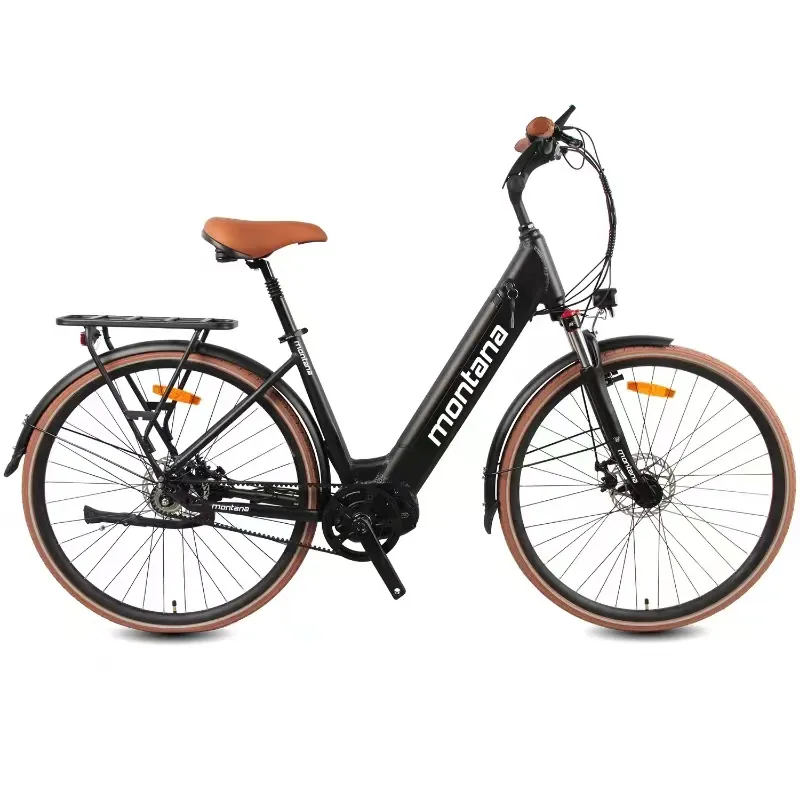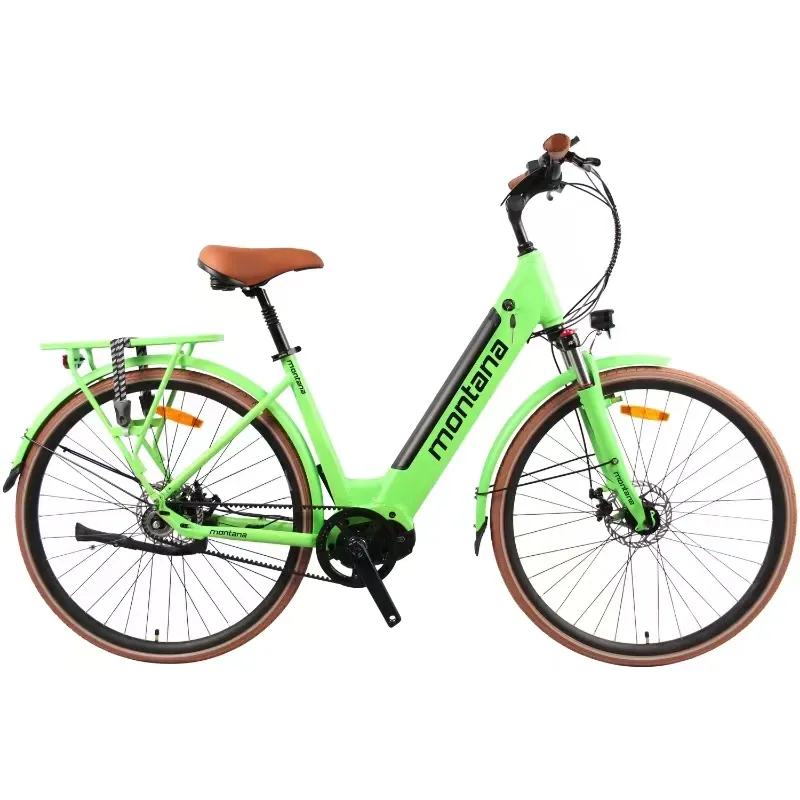Oct . 13, 2025 13:15 Back to list
Carbon Fiber eBike: Ultra-Light, Fast, Long-Range Commuter
A Street-Smart Look at Carbon E‑Commuters (and the Mid‑Motor Urban Workhorse I’ve Been Riding)
If you’re shopping a carbon fiber ebike, you’ve probably noticed two camps: ultra‑light carbon flyers and practical mid‑motor commuters with stealth batteries. This model—Urban Mid‑Motor Lithium Electric Commuter Bike (made in China)—lands in the second camp but borrows a lot from the first. Hidden battery, torque‑friendly mid drive, clean cable routing. And yes, many buyers ask about carbon frames or composite forks; the trend is real, even for city bikes.

What’s changing in the category
To be honest, the biggest shift I see is weight and integration. Brands chase sub‑18 kg builds, even with fenders and lights. Mid motors (EU‑friendly 250 W nominal) paired with removable batteries remain the sweet spot for reliability and hill torque. Carbon shows up in frames, forks, or at least seatposts to dampen chatter. The result: quieter rides and less fatigue on broken city asphalt.
Urban Mid‑Motor: fast facts
| Motor | Mid‑drive 250 W nominal (EU), torque sensor, peak ≈ 500 W (real‑world may vary) |
| Battery | Hidden, removable Li‑ion 36 V 10–14 Ah (≈ 360–504 Wh); UN38.3 & IEC 62133 compliant |
| Range | ≈ 60–120 km per charge (rider 75 kg, mixed assist, flat city) |
| Frame & fork | Urban commuter frame; carbon fork or composite components optional in some markets |
| Brakes | Hydraulic disc, 160–180 mm |
| Weight | ≈ 17–19.5 kg depending on kit, mudguards, and racks |
| Certifications | CE; EN 15194 for EPAC; RoHS; EMC per EN 61000; battery UN38.3 |

Materials and build process (quick tour)
- Composites: where spec’d, carbon layups typically use T700/T800 pre‑preg with EPS or bladder molding for smooth internal walls.
- Hardware: stainless fasteners; sealed bearings; IPX5‑ish harness routing for daily rain. Actually survives real commutes.
- Quality checks: ultrasonic spot checks on composite parts; torque auditing; battery BMS stress at 2C; salt fog on fittings (≈ 48 h).
Testing: EN 15194 electrical safety/EMC; ISO 4210 frame & fork fatigue. Internal frames have cleared ≈100,000 cycles at 1,200 N vertical fatigue and pass fork bending to spec. Service life? Frames 5–7 years of daily use; batteries ≈700–1,000 cycles before notable capacity dip—your mileage will vary.
Where it shines
- Daily city rides 5–25 km each way, frequent stop‑starts.
- Hilly districts needing mid‑motor torque, not just cadence kick.
- Fleet and campus mobility—quiet drive, removable packs for quick swaps.
Many customers say the stealth battery look keeps the bike from “screaming e‑bike” in the rack. And a carbon fiber ebike fork or post does cut the buzz on old brick streets—surprisingly noticeable on longer days.

Vendor snapshot (public specs, subject to change)
| Vendor/Model | Frame options | Motor | Warranty ≈ |
|---|---|---|---|
| Yanlin Urban Mid‑Motor | Urban alloy; composite fork/components optional | Mid 250 W (EU) | Frame 2–5 yrs; elec. 1–2 yrs |
| Urtopia Carbon 1 series | Full carbon | Hub/mid variants | Typically 2 yrs |
| Specialized Turbo Vado/SL | Alloy; carbon components | Mid | 2 yrs (region‑dependent) |
| Trek Allant+ series | Alloy; carbon fork on some | Mid | Limited lifetime frame |
I guess the real decision is weight vs. practicality. A full‑on carbon fiber ebike can feel magical; a mid‑motor commuter with composite touches is often the smarter daily ride.
Customization & fleet options
- Gearing: 9‑speed derailleur or belt drive + IGH (low maintenance).
- Packs: 360–504 Wh standard; extended packs by request.
- Telematics: GPS/IoT module for fleets; over‑the‑air alerts.
- Contact points: carbon post/bar upgrade to mimic carbon fiber ebike comfort without full frame swap.
Mini case notes (field use)
Internal pilot, 30 city bikes over 9 months: ~7,800 km cumulative; 0 controller failures; two brake pad swaps per bike; average real‑world energy use ≈ 7–10 Wh/km in mixed assist. Commuters reported “quieter drivetrain” vs. hub motors and better hill starts. Data on file; conditions vary.
Compliance, safety, and longevity
- Standards: EN 15194 (EPAC), ISO 4210, EN 61000 (EMC), UN38.3 & IEC 62133 for cells. UL 2849 often requested in North America.
- Battery life: plan on 700–1,000 cycles; store at ~50% if idle. Charger carries CE marking.
- Service: annual bolt torque check; firmware updates if telematics fitted.
Citations:
- EN 15194:2017 Electrically power assisted cycles (EPAC)
- ISO 4210: Safety requirements for bicycles (frames/forks, fatigue)
- UN 38.3: UN Manual of Tests and Criteria for lithium batteries
- IEC 62133-2: Secondary cells and batteries containing alkaline or other non‑acid electrolytes
- UL 2849: Electrical Systems for eBikes
-
Discover Top E Bike Brand Insights, Specs & Future Trends | Yanline Bike
NewsNov.24,2025
-
Green E Bike – The Future of Sustainable Urban Mobility
NewsNov.24,2025
-
Ruffian eBike: Durable, Efficient Electric Bikes for Modern Mobility
NewsNov.23,2025
-
Comprehensive Guide to the Global E Bike Market and Future Trends
NewsNov.23,2025
-
Understanding Electric Bicycle Range: A Complete Guide for Smarter E-Bike Use
NewsNov.22,2025
-
Ceron Electric Bike – Efficient, Sustainable Urban Mobility Solutions
NewsNov.22,2025
-
Discover the Benefits and Innovations of Go Ebike | Sustainable Urban Mobility
NewsNov.22,2025




